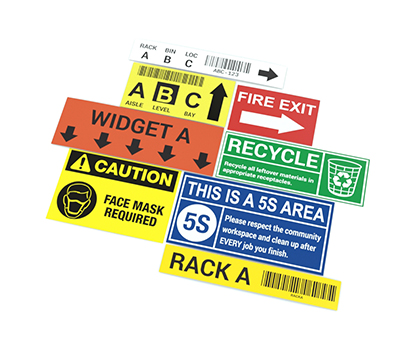
The most common type of barcodes used for warehouse rack labeling are one dimensional barcodes, they are also known as Universal Product Codes, or UPC. One dimensional barcodes can be seen everywhere in stores on products and in warehouses where manual inventory management practices are necessary to be able to run production smoothly without any hiccups in the supply chain.
The three important parts that are a part of every 1D barcode include:
- The quiet zone which is located on either end of the barcode can be seen as a blank space. This is essential for scanners to get a complete and accurate read of the barcode.
- Symbology is defined as the lines and spaces of a barcode that work to communicate with scanners. There are numerous different symbologies that can be chosen from depending on what works best for a facility’s unique setup and information needs.
- The X dimension refers to the thickness of both the black lines and the empty spaces between them. The X dimension determines how far away the label can be scanned – the bigger the label, the larger the scanning distance.
The other barcode option is a QR code, also known as 2D barcodes. QR codes hold quite a bit more information than a traditional UPC barcode and can be tailored to give a wide variety of information rather than just a string of numbers as do 1D barcodes. However, these are usually used for tracking purposes or for customers to scan to learn about their product or a service. With that being said, the traditional and much simpler 1D/UPC barcodes are much better suited for inventory management purposes.
Similar Questions
- What are the benefits of implementing a warehouse rack labeling system?
- What is a rack labeling system?
- What are some different rack labeling strategies?
- Why is rack labeling important?
- What supplies are needed for implementing a rack labeling system?
- What are the differences between rack labels, bin labels, and shelf labels?
- What are bin location labels?
- What is the best system to keep track of inventory?
- How can I Streamline Warehouse Operations with Rack Labeling?

